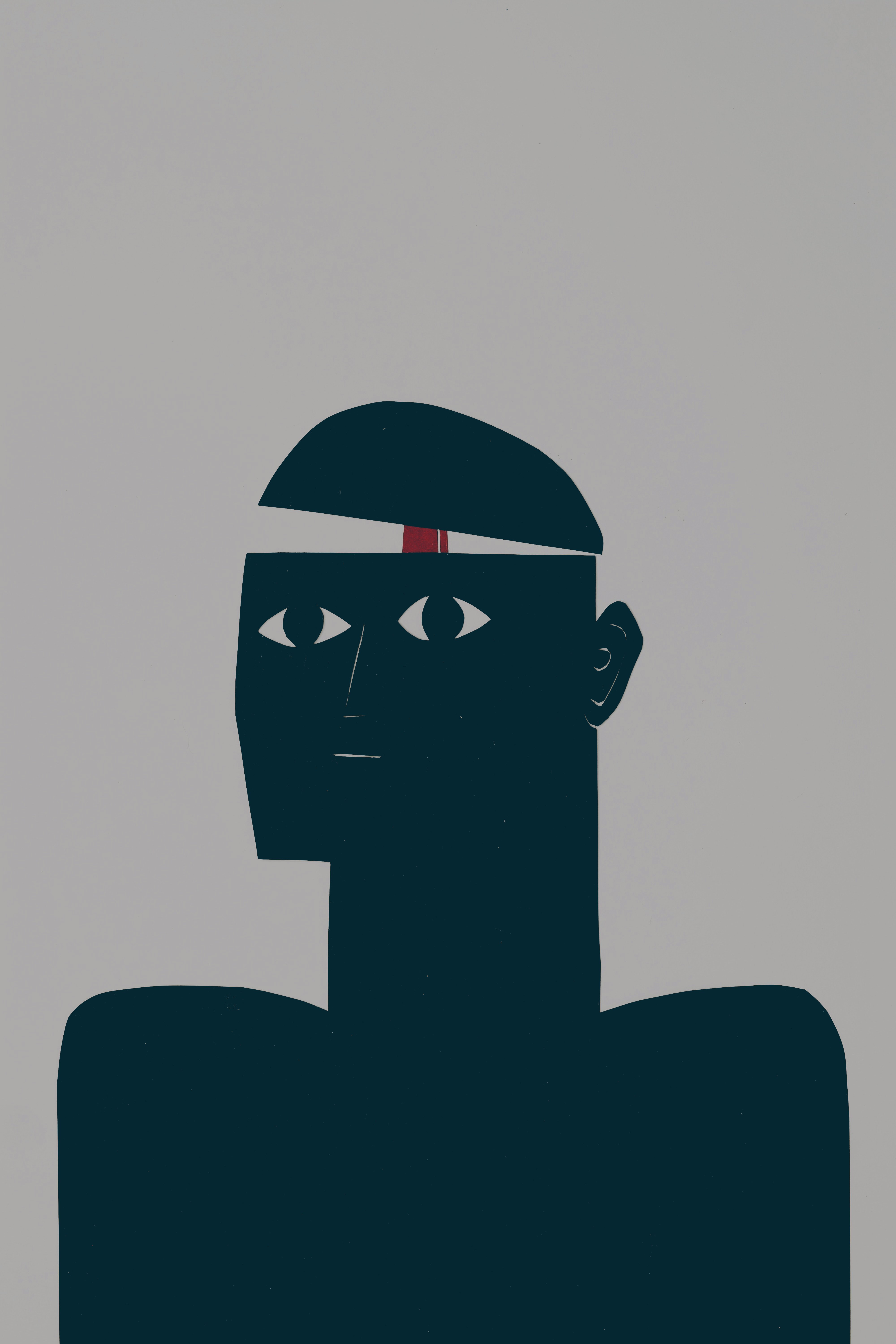Behavioral design
Author
Djujan Bijstra
Published
09 October 2020
Reading time
8 minutes
We make 35,000 decisions every day. To do this somewhat efficiently, 95 percent of these decisions go on autopilot. The other 5 percent is carried out by the rational part of our brain.
Tap into the unconscious for the best app
Many disciplines, such as marketing and “behavioral economics”, already make extensive use of knowledge of the unconscious. In the design of products and services, this subject has been on the rise in recent years.
In this post, I share five benefits of responding to the unconscious in application design, or Behavioral Design.
There must be an app for that
It was a rainy Sunday in April 2020 and I was bored. The corona crisis was in full swing and I wanted to learn something new. For years I have been planning to learn Spanish. ‘There must be an app for that’ I thought. In the Appstore of my brand I quickly came across Duolingo, an app for learning foreign languages. Good reviews and it had also been ‘Editors’ Choice’. Download the trial and get started! First a test to determine my level, all very playful.
That entry level was doable, so I immediately felt like a king. Slowly, more challenges arose. To really read stories you had to pass a certain ‘level’. That was a great goal. Before long, I purchased an annual subscription and used the app for 15 minutes every day.

DuoLingo's welcome message
In this example, you see a number of principles from Behavioral Design.
- Recommendation of an authority
- Try it for free
- A quick success experience but then challenges
- Score points
But most applications do not yet make much use of steering on the unconscious. Certainly not when it comes to the office applications we use every day.
Below I share five benefits of using Behavioral Design.
1. More predictive insight into your customer
Many tools are already being used within the design community to gain insight into users or customers. For example, you can conduct interviews, create personas or create user journeys and empathy maps. And above all, we must continue to do this.
However, there is also a downside. Besides the fact that these design artefacts are only a model of reality, people by no means always do what they say they do. In addition, they are not aware of ‘why’ they make certain choices. Or as Bob Dylan once sang:
People seldom do what they believe in. They do what is convenient, then repent.
As designers we know that. We try to overcome this by, among other things, testing our ideas with a prototype as quickly as possible and using it to conduct user research. But if you already know in advance which ‘elephant trails’ your users will take, you can immediately make a better design and test more specifically. You can use ‘cognitive biases’ for this.
A ‘cognitive bias’ is a systematic pattern or deviation from the norm or rationality in judgment.
Cognitive biases can help make better predictions about what people will do. There are many of these cognitive abnormalities that are well applicable in digital applications.
- Perceived value bias: We assign more value to products that look good or are presented beautifully.
- Decision paralysis: People find it difficult to choose from many options and therefore often do not choose at all. Therefore, offer a limited number of choices.
- Mere exposure effect: Familiarise loved, so don’t reinvent the wheel.

Mere exposure effect: People appreciate default patterns. Source: Mobilespoon.net
There are many such biases and there are all kinds of sources for them. You can find an overview of this in the Cognitive Biases Codex. By thinking about which biases play a role at an early stage as a designer, you will arrive at solutions that meet customer needs faster and you will have to test and iterate less.
2. A toolbox with patterns
People are quite consistent in their choice of ‘elephant trails’. Scientists have already discovered many patterns in this. Daniel Kahneman‘s standard work ‘Thinking, Fast and Slow‘, for example, made a major contribution to this. As a designer it is nice that you can make use of this. This means that you do not have to come up with something new ‘from scratch’, or especially copy existing interaction patterns, but you have a toolbox of ideas that you can use.

The Tikkie functionality ‘Let your friends determine the amount’ uses the ‘self-signalling effect’.
In the popular local Tikkie app you can see an example of a function that you may not immediately think of at first glance, but that fits well with a ‘cognitive bias’. If you enable the “Let your friends determine the amount” option, you leave them to decide what amount they want to give.
You would think ‘Then everyone gives as little as possible’, especially because only the recipient can see what you give. But that is not the case. Here, the ‘self-signalling effect’ is used. We act in accordance with our self-image, even when no one sees it. If we think we (should) be generous, then we will be generous even if the outside world is not watching.
Due to the legal nature of the biases, Behavioral Design gives you a toolbox from which to draw. This sometimes also leads to ideas that at first sight are not immediately rational.
3. More conscious use of control options
There are a number of ways in which you can send users in an application. In a direct way through the use of prompts or triggers, or in a more indirect way through the use of nudges.
Prompts A prompt, trigger or cue immediately elicits a response from a user. For example, when someone rings the bell, you (usually) open the door. Or, in the digital world, the alert about the number of unread messages in your email or social media application is a prompt that prompts you to open the messages.

Based upon the behavioral model by B.J Fogg.
B.J. Fogg developed an interesting model of prompt design. He makes it clear, among other things, that with low user motivation and a simple task, you should do something to increase motivation. For example, when leaving your e-mail address, you should especially design a prompt that increases motivation. For more complex tasks, you mainly have to increase the ‘ability’ of the user. Then, for example, focus on simplicity and usability of the application. There is no point in playing on the motivation of the user if the task is difficult to perform.
Nudges
In addition to direct control of prompts, you can also evoke behavior in an indirect way. About half of our population comes across them regularly: the flies in urinals. Originally used at Schiphol, but now also often used outside it to allow men to urinate more specifically. This is a form of “nudging”, which uses a small change in the environment to affect user behavior.

Example of nudging: Automatically continue watching Netflix.
Digital applications also contain all kinds of nudges to steer you in a certain direction. Examples are automatically continuing to watch Netflix to keep you on board or endless scrolling on social media. Scrolling and clicking to navigate to the next page means an extra action. This is a moment of awareness for the user and therefore a potential moment of withdrawal.
In fact, each user interface affects the user in a certain way, as in the NS example below. The recognisable house style, for example, uses the Mere exposure effect: something we see more often is more positively valued. The primary blue buttons such as the Checkout button attract attention (“selective attention”). The tab order uses serial positioning: the main tab is at the front.
In short, a good design of your prompts and nudges allows you to steer users in a desired direction.

NS app: Each user interface has different forms of control: use of color, the order in which things are offered, the size and color of the buttons, etc.
4. Higher chance of adoption of your application
Deploying your application is perhaps the most important step in the ‘user journey’. That is why I will consider this separately. When switching from an existing product to a new version, people quickly suffer from the ‘status quo bias’: they prefer to leave everything as it was.
With a new application you have to get people to start using that application. By lowering thresholds and quickly clarifying what your application does, you increase the chance of successful implementation.
A company that is much praised for its onboarding process is the communication service Slack. Principles from Behavioral Design, which Slack applies, for example
- Dividing a process into small steps, for example by only asking one thing at a time (goal gradient).
 Goal gradient: one step at a time. Fluency heuristic: smooth copy.
Goal gradient: one step at a time. Fluency heuristic: smooth copy.
- The microcopy reads smoothly and is clear (fluency heuristic).
- Remove barriers because you do not have to provide a username/password immediately.

Remove barriers: In Slack you don’t have to enter a username/password right away.
- Celebrate success, for example by the confetti that falls after entering your team name (choice supportive).
- Skip steps where possible (autonomy).

Autonomy: the option ‘Or, skip for now’ gives you the option to skip steps.
- Helping with the design of a project, so that users do not suffer from choice stress (decision paralysis).
 Help with setting up: Prevent Decision Paralysis
Help with setting up: Prevent Decision Paralysis
Do you happen to be engaged in an onboarding process? Make it really accessible and take a good look at an example like Slack.
5. More returning users
When people use your application, you want them to like it and come back. Ideally, you want the use of your application to become a habit. Of course, the most important thing is that your product simply works like a charm.
You can also create emotional bonding and give return an extra stimulus by working with rewards. Two important starting points are that the reward is immediate and that it is variable. These rewards don’t have to be big. A simple animation or ‘Like’ can be enough. For more background on this, see, for example, the CAR model as described in Digital Behavioral Design (T. Dalton Combs & Ramsay A. Brown).

In the introduction, I described my experience with Duolingo. This app also makes very good use of reward and gamification principles. A few examples:

Streaks: Responding to “loss aversion” by the chance of losing a streak.

Success experience and showing that you are close to your goal.

Self-actualization: It starts very easy, giving you an instant success experience.
So if you want to ensure repeat users, take advantage of rewards, however subtle.
Design for the user You may now be thinking, “And what about dark patterns?” Of course you can apply knowledge of Behavioral Design in a way that is less ethical. Then remember that you are not only designing for your client or yourself. You design for the customer or user. And we see that these days they increasingly value values such as honesty, transparency and social responsibility. So use knowledge of Behavioral Design with these values in mind.

Always consider what is ethical. Source: Mobilespoon.net
The advantages at a glance
The use of Behavioral Design in the design of digital applications yields a number of things, such as:
- More predictive insight into your customer
- A toolbox with rules
- More targeted control of the user
- Good adoption of your application
- More returning users
Because you mainly respond to the 95 percent of our behavior that is unconscious, you sometimes arrive at solutions that you come up with rationally less quickly and you can often make a big difference with small adjustments. In addition to inspiration, fun and quality, this will ultimately also save you time and generate money. More insight into your users, good management, accessible onboarding and enthusiastic, returning users always pay for themselves.
About the author

Design
User experience
UX



